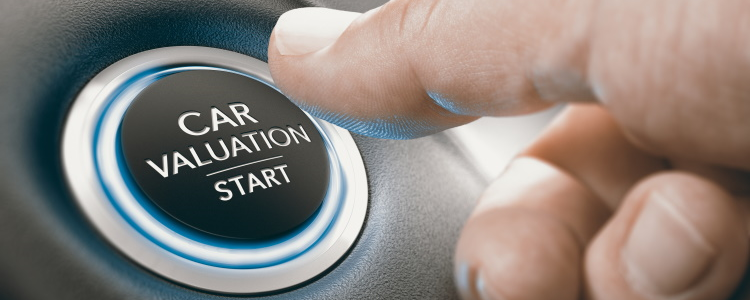When you want to trade in your vehicle, it's important that you know the value of your car before you head to a dealership. You may not find an exact price, but it's good to have a jumping off point for reference. After all, you don't want to end up selling a vehicle for much less than it's worth.
Who Decides Vehicle Value?
 On a trade-in, you're only ever going to get what a dealer is willing to offer you. The amount your car is worth to a dealership is called its actual cash value, or ACV. Even though the final ACV you're offered is up to the dealer, they don't just pick a number out of thin air.
On a trade-in, you're only ever going to get what a dealer is willing to offer you. The amount your car is worth to a dealership is called its actual cash value, or ACV. Even though the final ACV you're offered is up to the dealer, they don't just pick a number out of thin air.
Dealerships appraise your vehicle and compare it to auction reports and car valuation tools commonly referred to as "books." The price they offer you is based on book value, and what vehicles like yours sell for at auctions.
While auction reports aren’t usually available to the public, there are three common sources of book value that dealers use: Kelley Blue Book, Black Book, and NADAguides. These sources all pull data from wholesale auctions and retail markets across the country to compile the average prices for cars.
Understand that the book value is a baseline, and the value you're offered is based on your location, as well as the vehicle's condition and mileage.
Finding Estimated Vehicle Value
You can use many of the same valuation tools to determine the estimated value of your car by visiting websites such as KBB.com, or NADAguides. These websites use information you enter about your vehicle and compare it to book value in order to give you an estimated amount.
When you're researching how much you might get for your car, it's important to realize that the prices you see on valuation sites are only estimates. In order to get the most accurate estimate possible, be honest when answering questions about your vehicle, especially about trim level, condition, and mileage.
It's also a good idea to visit a few different valuation sites so you can get an idea of the range of offers you may receive. Remember, dealership offers may not match what you're seeing online. However, you have the option to sell your car yourself, either privately or using a third party like our trusted partner.
Getting the Most Out of Your Car
When you take your vehicle to a dealer for an appraisal, it should be in the best condition it can be – within reason. Clean it inside and out, buff out any spots that need it, and determine if it's worth your effort to repair any minor dents or scratches. These things should be done so that the dealership sees your car at its best.
However, if there are bigger areas of damage, or expensive mechanical repairs needed, you're likely to spend more fixing these than it's worth. Having them done may not increase the value enough to cover your costs, and dealers can often make repairs much more affordably than you can.
Additionally, like shopping valuation estimates online, you should also bring your vehicle to at least three different dealerships in order to take advantage of the best offer you can get. At least one dealer should be a franchised dealership for your brand.
If you find that you owe more than what the car is worth, this is considered being upside down on a loan, or having negative equity. The good news is that you can still trade in a vehicle that has negative equity, and you can find out how here.
Ready to Trade In but Worried about Credit?
If you're ready to trade in your car and get another vehicle but worry that credit challenges are standing in your way, let us help. Auto Credit Express specializes in matching borrowers with imperfect credit to local dealerships that have the lending resources they need.
You could waste time going from dealer to dealer looking for the best deal on your trade-in only to find out they can't get you into a car as a bad credit buyer. Instead, you can fill out our fast and free auto loan request form, and we'll work to connect you with a dealership near you.
















